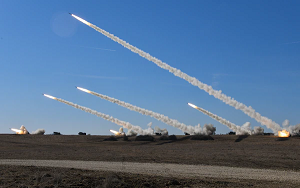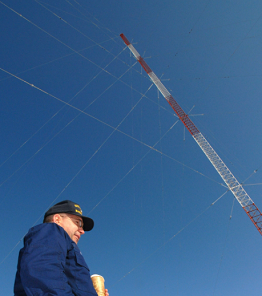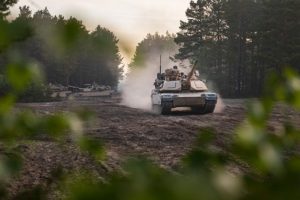[Editor’s Note: Army Mad Scientist welcomes back returning guest blogger COL Stefan J. Banach (USA-Ret.) with today’s post, exploring how the evolution and synthesis of technologies and culture have converged to realize new, disparate societies of global netizens. This convergence enables our adversaries to target each of us, transforming our homes and offices into a new non-kinetic war battle space. COL Banach codifies this brave new world of non-kinetic war and proposes a whole-of-nation way ahead for fighting and winning this unfamiliar warfare. “Control of the global non-kinetic terrain is the decisive operation, as it affects all things in the physical kinetic battle space” — Read on!]

This paper provides insights into the undermining of democracy, repression, and coercion that is noted in the 2022 National Security Strategy (NSS), through the lens of non-kinetic war. It also proposes a method for the development of doctrine and a strategy to counter non-kinetic war threats. 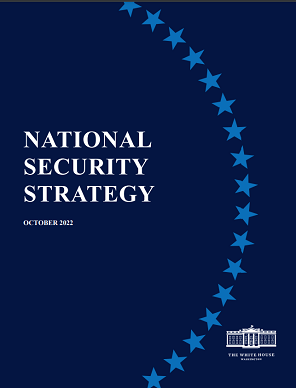 The recommendation is that the U.S. Army problem frame include non-kinetic war, kinetic war, and counter insurgency operations. The rationale is based on the change in the character of war over the past 40 years, and the directed task noted below in the 2022 National Defense Strategy (NDS). Decades of global entanglement, assured connectivity, persistent technical surveillance, and the effects of converging technologies have set the conditions for non-kinetic systems warfare on a global scale.
The recommendation is that the U.S. Army problem frame include non-kinetic war, kinetic war, and counter insurgency operations. The rationale is based on the change in the character of war over the past 40 years, and the directed task noted below in the 2022 National Defense Strategy (NDS). Decades of global entanglement, assured connectivity, persistent technical surveillance, and the effects of converging technologies have set the conditions for non-kinetic systems warfare on a global scale.
The aforementioned dynamics have reframed long standing epistemological norms that guide our thinking and understanding. The theory of cognition and knowledge has significantly changed for humans who are connected via the World Wide Web (WWW). People are exposed to new data, knowledge structures, and technology capabilities, which have made sense-making difficult today. These phenomena have also altered human ontology – our theory of being and the essence of things as we once perceived them. Technological advancements have created a multitude of traceable and targetable individual virtual avatars and a deceptive sense of being. Human identity and our DNA are increasingly becoming both biological and digital, out of necessity, and as a result of converging systems.1 Digital disintermediation has dethroned hierarchical governance, as people can obtain required information and make decisions without institutional approval.2 The degradation of data veracity and efficacy has irreversibly changed the theory of values and truth through the proliferation of misinformation, disinformation, and “fake news” that is promulgated by humans and bot virtual armies by nation state and non-nation state entities to achieve economic, political or ideological objectives.3 These variables, and many more, are having a profound impact on U.S. Army readiness and the ability to recruit and sustain an all-volunteer force.
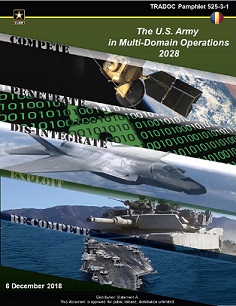 From a system thinking perspective, Multi-Domain Operations (MDO) and Information Advantage (IA) are supporting constructs that fit within the strategic non-kinetic war rubric. The precis of the U.S. Army’s MDO concepts presents a technical solution to a complex adaptive system of problems, which have not been fully framed and named. The current MDO and IA concepts are a good start, but do not capture the order of magnitude strategic non-kinetic war threats that are confronting the US and the world today. Controlling the global non-kinetic terrain is the decisive operation, as it affects all things in physical
From a system thinking perspective, Multi-Domain Operations (MDO) and Information Advantage (IA) are supporting constructs that fit within the strategic non-kinetic war rubric. The precis of the U.S. Army’s MDO concepts presents a technical solution to a complex adaptive system of problems, which have not been fully framed and named. The current MDO and IA concepts are a good start, but do not capture the order of magnitude strategic non-kinetic war threats that are confronting the US and the world today. Controlling the global non-kinetic terrain is the decisive operation, as it affects all things in physical  space. Expanding the cognitive aperture to frame and name non-kinetic war would be a positive step forward towards maintaining a competitive advantage in the global security environment, as directed in the 2022 National Defense Strategy (NDS).
space. Expanding the cognitive aperture to frame and name non-kinetic war would be a positive step forward towards maintaining a competitive advantage in the global security environment, as directed in the 2022 National Defense Strategy (NDS).

The United States is engaged in a global non-kinetic war that has not been framed or named. Non-kinetic war is a strategic form of maneuver that is dividing populations and disrupting cultures, around the world in a historic manner. This non-physical approach to war produces opaque affects that are not known to the targeted entity initially, and potentially will go unnoticed for months and even years. We have witnessed instances of this new type of war against U.S. Government agencies during repeated hacks of the Office of Personnel Management.4 These types of attacks also occurred in corporate America involving the Solar Winds and the Colonial Pipeline companies.5
Threat entities to the United States are using non-kinetic relational dialectic strategies to divide populations. Relational Dialectics Theory (RDT) is an interpersonal communication theory about relationships that highlights the tensions, struggles, and interplay between social groups, political parties, and religions, et al. The theory, proposed by Leslie Baxter and Barbara Montgomery, defines communication patterns between relationship partners  as the result of endemic dialectical tensions.6 Non-kinetic war heuristics provide adversaries to the United States with a new means to exploit dialectical relational tensions to divide our country. Semiotic exploitation maneuvers have further attacked the signs and symbols of nation-states around the world, to sow discord among various cultures, governments, and economic classes in a given society. Nation state and non-nation state entities have adopted and weaponized a new body of theory. These entities are indirectly attacking the West, and specifically the United States, using non-kinetic instruments of war whereby war is not perceived as war. All of this is intentional, repressive, and represents a risk to the United States, if it is left unchecked.
as the result of endemic dialectical tensions.6 Non-kinetic war heuristics provide adversaries to the United States with a new means to exploit dialectical relational tensions to divide our country. Semiotic exploitation maneuvers have further attacked the signs and symbols of nation-states around the world, to sow discord among various cultures, governments, and economic classes in a given society. Nation state and non-nation state entities have adopted and weaponized a new body of theory. These entities are indirectly attacking the West, and specifically the United States, using non-kinetic instruments of war whereby war is not perceived as war. All of this is intentional, repressive, and represents a risk to the United States, if it is left unchecked.

The U.S. military is standing astride an historic warfare fault-line. A new form of global power has surfaced and is disrupting the previous kinetic warfighting schema. New language is required to describe the emergent security phenomena that is increasing in pervasiveness and power. Leadership and personal mastery over modern war, contemporary mental models, learning archetypes, process systems, and the ability to create a relevant shared vision within compressed timelines is now a challenge and liability for leaders.7
New threat non-kinetic war innovations are being masked with legacy language, mental models, physical warfighting systems, and doctrine, from a previous warfighting paradigm.
The U.S. Army, the Department of Defense (DoD), and the U.S. Government writ large are struggling to see non-kinetic war through a new lens.  Historically, the “Great Captains of War” have routinely missed the new war. We saw this happen with the French in 1940, the U.S. Military in 2003 in Iraq, and we are seeing it happen now with non-kinetic war. The 9/11 Commission Report’s significant finding was, “The most important failure was the lack of imagination.”8
Historically, the “Great Captains of War” have routinely missed the new war. We saw this happen with the French in 1940, the U.S. Military in 2003 in Iraq, and we are seeing it happen now with non-kinetic war. The 9/11 Commission Report’s significant finding was, “The most important failure was the lack of imagination.”8
In times of exponential change, one must change exponentially. An anticipatory leadership ilk, and a healthy professional skepticism, are required to expand the operational art, discover a new range of theory, and to identify the emergence of new types of war. Imagining new forms of non-kinetic maneuver and seeing the patterns for the weaponization of new technologies against cultures and armies in novel ways, are critical modern war leadership imperatives.
Non-kinetic war is a byproduct of the convergence, which is the evolution and the synthesis of technology, education, economic, finance, social, governance, and other foundational cultural systems. This convergence has produced a new reality that is not recognized by many people, to include U.S. Army service members. The momentum and exponential power of the convergence has  transformed connected citizens into a new species: the global netizen.9 Millions of human beings today have unwittingly become netizens, through algorithmic warfare attacks, attention distraction techniques, pervasive change technologies, and bot-driven reflexive control operations by nation-state and non-nation state actors. Taken together, these trends have created a state of liminality and non-kinetic war blindness for many of the global commons.
transformed connected citizens into a new species: the global netizen.9 Millions of human beings today have unwittingly become netizens, through algorithmic warfare attacks, attention distraction techniques, pervasive change technologies, and bot-driven reflexive control operations by nation-state and non-nation state actors. Taken together, these trends have created a state of liminality and non-kinetic war blindness for many of the global commons.
Technology Transformation. This transformation is explained by Paul Virilio who opined that, “Every new technology carries its own negativity, which is invented at the same time as the technical progress.” For example, when the train was invented, the train wreck was also created. When the airplane was invented, the plane crash was also created, etc. That is the case for the convergence of technologies, which were created and used across an array of systems throughout the four industrial revolutions since 1765. When we created the WWW and the new palette of technologies that we have at our fingertips today, we also weaponized global learning system, invented non-kinetic war, conceived the new global netizen life form, and created the “Instrumentarian” – a new species of power that Shoshan Zuboff notes in her book, The Age of Surveillance Capitalism.
The convergence also ushered in a Revolution in Human Affairs, where Soldiers and Civilians are now both combatants in non-kinetic war. We saw  this with Elon Musk maneuvering satellites over the Ukraine, a sovereign nation state, which was engaged in war with Russia, a nuclear capable nation-state.10 The group Anonymous attacked the Russian communication systems, and hacktivists attacked the Belarus train station to slow the Russian deployment of its forces prior to the start of the Ukraine War. Today, our homes, offices, and all places in between are non-kinetic war battle space. The principal non-kinetic weapon systems are carried in our hands, on our wrists, or sit on our desks. How should U.S, Army leaders adjust behavior to see this new front that draws its power from the decisive non-kinetic terrain?
this with Elon Musk maneuvering satellites over the Ukraine, a sovereign nation state, which was engaged in war with Russia, a nuclear capable nation-state.10 The group Anonymous attacked the Russian communication systems, and hacktivists attacked the Belarus train station to slow the Russian deployment of its forces prior to the start of the Ukraine War. Today, our homes, offices, and all places in between are non-kinetic war battle space. The principal non-kinetic weapon systems are carried in our hands, on our wrists, or sit on our desks. How should U.S, Army leaders adjust behavior to see this new front that draws its power from the decisive non-kinetic terrain?
Non-Kinetic War Learning Systems. The learning system is the weapon system. A military’s learning system, for time immemorial, has been the primary and most important weapon system in war. Learning faster than our 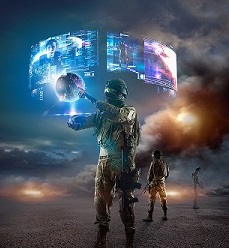 adversaries is critical. Controlling what our adversaries learn, when they learn it, and how they learn it is now possible and can lead to the perception of a multi-reality environment. That is what we are witnessing today. The activity of non-kinetic war has weaponized the global learning system. The global learning system is the aggregation of a multitude of capabilities that people use every day to communicate, live, prosper, and to wage war. The principal objective of non-kinetic war is to deny the productive range of learning to a given adversary or culture, to degrade decision-making competencies.
adversaries is critical. Controlling what our adversaries learn, when they learn it, and how they learn it is now possible and can lead to the perception of a multi-reality environment. That is what we are witnessing today. The activity of non-kinetic war has weaponized the global learning system. The global learning system is the aggregation of a multitude of capabilities that people use every day to communicate, live, prosper, and to wage war. The principal objective of non-kinetic war is to deny the productive range of learning to a given adversary or culture, to degrade decision-making competencies.
The global learning system has been weaponized with the advent of the: World Wide Web, cyber, social media, artificial intelligence, machine learning, robotics, nanotechnologies, electronic warfare, signals intelligence, space operations, behavioral science, synthetic bio-medical developments, attention distraction heuristics, and pervasive change technologies. Going forward, this group of technology capabilities, and theory, will be referred to as the “Technology Palette.”
 DoD and Joint Force learning system growth and alignment are critical to achieving success on current and future battlefields. The DoD and the Joint Force currently use a process operating system, as the foundation for learning, and to maintain and sustain a competitive advantage. Theoretically, and practically, this is unsustainable as processes are not created for complex adaptive problem situations, which is the problem typology that is most prevalent today. Processes are optimized for technical problem solving and management.11 The process operating system represents only 33% of the learning system capability that is required to win a war today. In other words, the DoD and the Joint Force lack 67% of the operating system capabilities, which are required to drive the learning that is necessary to win the Nation’s wars. The DoD and the Joint Force require a big data operating system and a design operating system, in conjunction with a new updated process operating system, to remain relevant.
DoD and Joint Force learning system growth and alignment are critical to achieving success on current and future battlefields. The DoD and the Joint Force currently use a process operating system, as the foundation for learning, and to maintain and sustain a competitive advantage. Theoretically, and practically, this is unsustainable as processes are not created for complex adaptive problem situations, which is the problem typology that is most prevalent today. Processes are optimized for technical problem solving and management.11 The process operating system represents only 33% of the learning system capability that is required to win a war today. In other words, the DoD and the Joint Force lack 67% of the operating system capabilities, which are required to drive the learning that is necessary to win the Nation’s wars. The DoD and the Joint Force require a big data operating system and a design operating system, in conjunction with a new updated process operating system, to remain relevant.
The U.S. military requires the three operating systems noted above, and new non-kinetic principles of war and warfighting functions, to ensure survivability on a battlefield. The longstanding hierarchical learning system and its attendant decision-making zeitgeist is collapsing before our eyes, given exponential technological change.12 Developing a leadership acumen in the U.S. Army which is capable of leading adaptive work and learning across enterprise boundaries is important, in terms of naming and framing non-kinetic war heuristics.13 The need for big data-enabled decision-making capabilities and autonomous leadership has never been greater within the DoD to increase anti-fragility across the force.
Anti-Fragility. Nassim Taleb suggests that achieving an elevated level of Anti-Fragility, the ability to gain strength from disorder, is an essential leadership and cultural imperative.14 Anti-Fragility will be required, as we move on from a big data paradigm to a quantum sensing, communication, encryption, decryption, and computing reality in the 2030s. When realized, these technological advancements will assist in ushering in a post-human era that will fundamentally change every aspect of our lives.15 Societal ruptures will occur throughout the world, as a new world order emerges.16 Is the U.S. military prepared for the systemic shock that will accompany the radical change in technological power, and a quantum-driven world?17 The realpolitik of the United States and the West writ large, would do well to embrace this looming reality now by making the required investments to secure our future.

Asymmetry. The U.S. military should be prepared to fight any and all forms of war that emerge in the global security milieu. Non-kinetic war and counter-insurgency operations (COIN) have been the dominant and new conventional war over the past 32 years. Kinetic war has become the new irregular war given its intermittent use over the same timeframe. This is not a binary issue. The point is that the US has traversed a warfare inflection point over the past three decades, which has flipped the global warfare script. United States expenditures for defense do not align with this global warfare paradigm shift. The DoD is projected to receive approximately 817 billion dollars in its 2024 budget. The overwhelming majority of the DoD budget will be spent on kinetic warfighting capabilities.
Non-kinetic war is low cost in terms of human life and funding. It can be fought, and won, at pennies on the dollar. This opens the door for a multitude of small nation state entities, terror organizations, and civilian corporations to wield disproportionate power in the global security environment. Non-kinetic war also produces multiplicative strategic effects, at exponential virtual speed, and can create enduring systemic shock across continents, as we have seen with the coup d’états on the African continent. Pervasive global reach, unrelenting virtual munitions by way of IT robot (bot) armies, and decentralized indirect attacks underpin non-kinetic war. Controlling information efficacy, momentum, speed, volume, and achieving time-space compression, are new elements of the operational art that could degrade adversary cognition and decision space.
Synthetic Force Protection. All technology devices emit targetable signatures that form virtual avatars for both man and machine. The digital emissions allow for the transmission of locations and behavior patterns that are manipulated in every way imaginable for private sector profit, and military 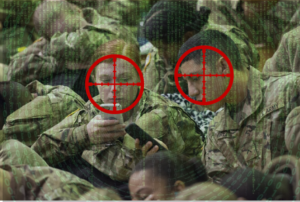 advantage. Multiple levels of synthetic protective measures are required to cloak a growing number of virtual avatars that compromise the netizen and the service members’ location, and activities in non-kinetic battlespace, that includes CONUS activities. Various levels of synthetic body armor are required to ensure survivability of man and machine on a modern battle that includes traditional kinetic battlefields, as well as, our homes, offices, and all points in between.
advantage. Multiple levels of synthetic protective measures are required to cloak a growing number of virtual avatars that compromise the netizen and the service members’ location, and activities in non-kinetic battlespace, that includes CONUS activities. Various levels of synthetic body armor are required to ensure survivability of man and machine on a modern battle that includes traditional kinetic battlefields, as well as, our homes, offices, and all points in between.
Every netizen, U.S. service member, and warfighting system are engaged in an unrelenting non-kinetic war that leverages all connected segments of technology for exploitation. Each of these entities, require synthetic immunity akin to the three levels of biological immunity in the form of a new Synthetic Threat Intrusion Defense System (STIDS). For example, Synthetic Innate Immunity could be a universal baseline capability that all DoD service members receive upon entry into the military for all their personal and military devices. Synthetic Adaptive Immunity could be a set of capabilities that are drawn from a host entity over time, to keep pace with technology advancements. Synthetic Barrowed Immunity packages could be dynamically generated protective technologies that are tailored to a specific threat capability or region of the world. These synthetic enhancements are required to protect every connected human being and machine in non-kinetic battlespace, to prevent loses in the kinetic battle space. Synthetic Stealth by way of IP “Frequency Hopping” and spoofing technologies will increase life expectancies in modern war. Synthetic Sensing, the corollary to the five biological senses, could also be created to ensure survivability on a modern battlefield. The creation of Joint Non-Kinetic Maneuver Training Centers, the corollary to the kinetic NTC/JRTC training centers, could immeasurably enhance the readiness of the U.S. Army and Joint Force.
Cognition. The threat environment has changed. U.S. service members cannot think as fast as the machines which are targeting them today. Technology has changed significantly. However, the human brain has not changed enough to address the increased cognitive demands inherent in non- kinetic war. Decision-making at the individual level will require synthetic assistance to ensure survivability on a kinetic battlefield. The fusion of biological and machine intelligence is required to sustain human life on a non-kinetic and kinetic battlefield.18 Left unchecked, this non-kinetic battlespace problem will increase in complexity and will lead to survivability being measured in minutes and seconds while engaged in kinetic combat.
kinetic war. Decision-making at the individual level will require synthetic assistance to ensure survivability on a kinetic battlefield. The fusion of biological and machine intelligence is required to sustain human life on a non-kinetic and kinetic battlefield.18 Left unchecked, this non-kinetic battlespace problem will increase in complexity and will lead to survivability being measured in minutes and seconds while engaged in kinetic combat.
The Non-Kinetic War Frame. The non-kinetic war phenomena is far more powerful than the four Revolution in Military Affairs (RMA) combined effects, which have occurred over the past 124 years.19 Non-kinetic war consists of the following 21 forms of warfare: Virtual Warfare, Cognitive Warfare, Information Warfare, Psychological Warfare, Cyber Warfare, China’s “Lawfare,” Irregular Warfare, Political Warfare, Economic Warfare, Financial Warfare, Culture Warfare, Social Warfare, Digital Warfare, Space Warfare, Systems Warfare, Hybrid Warfare, Hyper Warfare, Gray Zone Warfare, Electronic Warfare, Multi-Reality Warfare, and Quantum Warfare.20 None of these forms of warfare can be dismissed, as they are all valid threats to the American way of war. All of these forms of warfare present the U.S. Army with a complex system of problems that require adaptive work. These warfare systems also present a number of asymmetric opportunities that the U.S. military has yet to realize. Embracing the recommendations in this essay could change that fact.
This arrangement of warfare systems highlights the need to address technical problem-solving processes and technical work. It also requires the development of a complex adaptive problem-solving culture, new mental models, and the development of an adaptive work acumen across Army, Joint Service, and Inter-agency boundaries—to synthesize these 21 forms of warfare and the attendant technologies into a new strategic form of maneuver that can win wars now. This adaptive work could begin with the recognition of the Four Elements of Non-Kinetic War which are the backbone for Six Non-Kinetic Principles of War, and Five Non-Kinetic Warfighting Functions. Controlling these three new constructs are the start to defeating non-kinetic war maneuver strategies.
Four Elements of Non-Kinetic War: Technological structures, technological capabilities, the flow of data, and the timing for when data appears in the virtual environment are the four elements of non-kinetic war. These elements form the backbone of the global learning system that includes technology, education, economic, social, finance, governance, and a multitude of other systems.
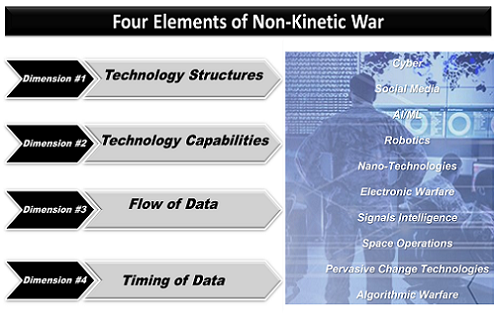
Six Non-Kinetic Principles of War: Non-kinetic war is underpinned by six new principles that includes the global entanglement of all the systems that are used today. The global entanglement phenomenon enables assured connectivity with the global commons. This sets the conditions for persistent technical surveillance of all netizens and pervasive systems warfare on a global scale. Virtual colonization and social control are the final two principles which underpin non-kinetic war.
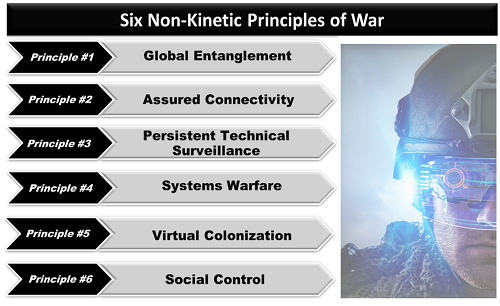
Five Non-Kinetic Warfighting Functions: Includes the infiltration of individual, organizational, corporate, or nation-state governance systems. After the system infiltration is complete, there is an orientation period in a “Perch” posture. After being orientated, the threat actor then makes adaptations to what the compromised system presents and then proceeds with data extraction and data exploitation for continued surveillance, profit, or positional advantage in the global commercial marketplace or in the security environment.
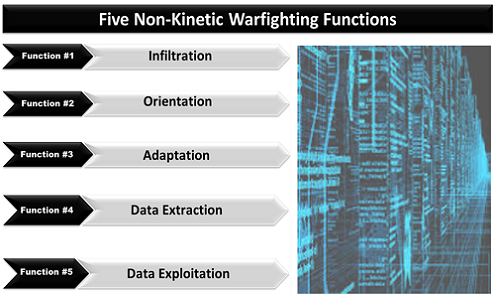
The Strategic Imperative. There is a need to create the corollary to the Manhattan Project to overcome our Non-Kinetic War challenge.21 This opportunity would require a broad range of strategic sponsors, U.S. Government agencies, Joint and Army Headquarters, and civilian subject matter experts, who could comprise an enterprise-wide design team to address the adaptive work and complex system of problems inherent in the ongoing global non-kinetic war. Forming an inclusive whole-of-nation design team that is capable synthesizing the 21 forms of non-kinetic warfare and the 4th Industrial Revolution technology palette that underpins non-kinetic war is critical.
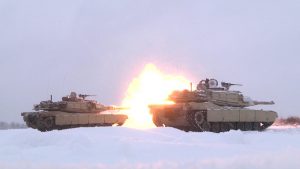 The U.S. Army masterfully synthesized the Infantry, Armor, Artillery, Aviation, Intelligence, Air Defense, Engineer, and Command & Control Systems into an unmatched kinetic combined arms maneuver construct in the 20th Century. The United States needs to do the same for non-kinetic war and shape our future where we can win through the synthesis of 4th Industrial Revolution technology palette. The new non-kinetic way of war strategy will cut across existing barriers and will be significantly different than any
The U.S. Army masterfully synthesized the Infantry, Armor, Artillery, Aviation, Intelligence, Air Defense, Engineer, and Command & Control Systems into an unmatched kinetic combined arms maneuver construct in the 20th Century. The United States needs to do the same for non-kinetic war and shape our future where we can win through the synthesis of 4th Industrial Revolution technology palette. The new non-kinetic way of war strategy will cut across existing barriers and will be significantly different than any  archetypes used in the past. This task requires strategic sponsorship, adaptive leadership, innovation, and imagination to take the next step in the right direction — to win the Nation’s wars and ensure the preservation of our Republic.
archetypes used in the past. This task requires strategic sponsorship, adaptive leadership, innovation, and imagination to take the next step in the right direction — to win the Nation’s wars and ensure the preservation of our Republic.
U.S. Army Mission Essential Non-Kinetic War End State Tasks.
-
-
- The corollary doctrinal schema for what is seen in kinetic war needs to be created for non-kinetic war.
- Synthesis of the 4th Industrial Revolution technology palette is required to create a new non-kinetic strategic maneuver strategy.
- Control of the global non-kinetic terrain is the decisive operation, as it affects all things in the physical kinetic battle space.
- Identify a broad range of political sponsors, U.S. Government agencies, Joint and Army Headquarters, civilian Subject Matter Experts to form an enterprise design team to address the adaptive work and complex system of problems inherent in the ongoing global non-kinetic war.
Winning. Redefining what “Winning” a war means to the American people is critical. Holistically addressing kinetic war, counter-insurgency (COIN) operations, and non-kinetic war as the current U.S. Army war problem frame is the starting point to winning wars. Had the U.S. Army conducted an enterprise-wide After-Action Review (AAR) after the losses sustained in the Afghanistan and Iraq wars, U.S. leaders may have acknowledged all three types of war that should comprise the U.S. war problem frame. As in the past, the U.S. Army has experienced changes in the character of war. Non-kinetic war impacts kinetic war and COIN operations every day. Of note, the United States is actively engaged in a global COIN war on six of the seven continents in the world, to include North America. The US is also engaged in a global non-kinetic war. The non-kinetic war knowledge gap that exists today between U.S. law enforcement and DoD technology subject matters relative to a conventional U.S. Army service member presents tremendous risk to the force and to the mission. This capability gap should be addressed by teaching the range of theory inherent in the technology palate that is addressed in this paper using the Civilian Education System (CES) and in Professional Military Education (PME).
Codifying and communicating success Limits of Tolerance within specific Zones of Acceptability over time, when engaged in each of the three forms of war noted above, is critical to defining and understanding what “Winning” means. Activities which occur in the non-kinetic battle space that necessitate reprisal in the kinetic battle space or in a COIN operation requires further clarification for the American people. The inability of the U.S. Government to strategically communicate an all-inclusive U.S. war problem frame to U.S. citizens due to national security reasons is eroding the will of the American people. It is also impacting the ability to mobilize an increasingly compromised U.S. national industrial base. This is the end game of the threat non-kinetic war strategy. Sun Tzu’s idiom, “The supreme art of war is to subdue the enemy without fighting,” is now feasible by way of non-kinetic war. Are adversaries to the U.S. military on the cusp of winning, without firing a kinetic munition?
Risk of Not Acting. The non-kinetic threat that is before the United States requires a new logic, form, functions, culture, laws, and authorities to sustain a U.S. Constitution-driven American way of life. Non-kinetic war goes well beyond the boundaries of the U.S. Army and the DoD, and our adversaries are aware of that. Threats to the United States have kept the world’s most  powerful military off the non-kinetic battlefield through the use of the “lawfare” practice of block and diversion, which presents conflict with U.S. laws, authorities, and military regulations. The risk of not acting on this recommendation is the loss of our freedom as ascribed in the United States Constitution.
powerful military off the non-kinetic battlefield through the use of the “lawfare” practice of block and diversion, which presents conflict with U.S. laws, authorities, and military regulations. The risk of not acting on this recommendation is the loss of our freedom as ascribed in the United States Constitution.
If you enjoyed this post, check out COL Stefan J. Banach‘s previous posts and podcasts:
The Light on the Hill: America and Non-Terrestrial War, its associated podcast, and its companion essay The “Convergence” and Non-Terrestrial War
Global Entanglement and Multi-Reality Warfare, and associated podcast
Virtual War – A Revolution in Human Affairs (Parts I and II)
… as well as the following related content:
The Operational Environment (2021-2030): Great Power Competition, Crisis, and Conflict, along with its source document
Speed, Scope, and Convergence Trends
Sub-threshold Maneuver and the Flanking of U.S. National Security and Is Ours a Nation at War? U.S. National Security in an Evolved — and Evolving — Operational Environment, by Dr. Russell Glenn
Hybrid Threats and Liminal Warfare and associated podcast, with Dr. David Kilcullen
Russia-Ukraine Conflict: Sign Post to the Future (Part 1), by Kate Kilgore
China and Russia: Achieving Decision Dominance and Information Advantage, by Ian Sullivan
Information Advantage Contribution to Operational Success, by CW4 Charles Davis
The Exploitation of our Biases through Improved Technology, by proclaimed Mad Scientist Raechel Melling
A House Divided: Microtargeting and the next Great American Threat, by 1LT Carlin Keally
The Erosion of National Will – Implications for the Future Strategist, by Dr. Nick Marsella
Weaponized Information: What We’ve Learned So Far… and Insights from the Mad Scientist Weaponized Information Series of Virtual Events
 About the Author: COL Stefan Banach (USA-Ret.) served with distinction in the U.S. Army from 1983 to 2010. He is a Distinguished Member of the 75th Ranger Regiment and served in that special operations organization for nine years, culminating with command of the 3rd Ranger Battalion from 2001-2003. He led U.S. Army Rangers during a historic night combat parachute assault into Afghanistan on October 19, 2001, as the “spearhead” for the Global War on Terror. Steve subsequently led U.S. Army Rangers in a second combat parachute assault into Al Anbar Province in western Iraq in 2003. He also served as the Director, School of Advanced Military Studies (SAMS); Director, Army Management Staff College; and is now the TRADOC G2 Non-Kinetic War Design Officer. He also earned a certificate in Leadership in Crisis: Preparation and Performance, from the JFK School of Government at Harvard University.
About the Author: COL Stefan Banach (USA-Ret.) served with distinction in the U.S. Army from 1983 to 2010. He is a Distinguished Member of the 75th Ranger Regiment and served in that special operations organization for nine years, culminating with command of the 3rd Ranger Battalion from 2001-2003. He led U.S. Army Rangers during a historic night combat parachute assault into Afghanistan on October 19, 2001, as the “spearhead” for the Global War on Terror. Steve subsequently led U.S. Army Rangers in a second combat parachute assault into Al Anbar Province in western Iraq in 2003. He also served as the Director, School of Advanced Military Studies (SAMS); Director, Army Management Staff College; and is now the TRADOC G2 Non-Kinetic War Design Officer. He also earned a certificate in Leadership in Crisis: Preparation and Performance, from the JFK School of Government at Harvard University.
Disclaimer: The views expressed in this blog post do not necessarily reflect those of the U.S. Department of Defense, Department of the Army, Army Futures Command (AFC), or Training and Doctrine Command (TRADOC).
1 Eric Schimdt, The New Digital Age, John Murray Publisher, Paperback 2014, Page 40.
2 Peter W. Singer and Emerson T. Brookings, LikeWar: The Weaponization of Social Media, 2018, Eamon Dolan Book, Houghton Mifflin Harcourt, Page 55.
3 Peter W. Singer and Emerson T. Brookings, LikeWar: The Weaponization of Social Media, Page 34.
4 Office of Personnel Management Hacks, 2015, OPM announced two separate but related cybersecurity incidents.
5 Solar Winds and the Colonial Pipeline companies. Congressional Bipartisan Cyber Reporting Bill. The hack of IT management firm SolarWinds, which resulted in the compromise of hundreds of federal agencies and private companies, and the May 2021 ransomware attack on the Colonial Pipeline, which halted pipeline operations temporarily and resulted in fuel shortages along the Atlantic seaboard of the United States, as well as a recent onslaught of ransomware attacks affecting thousands of public and private entities.
6 Leslie Baxter, 2014 University of Oklahoma Relational Dialectics Theory (RDT) Seminar. In person RDT dialogue with Dr. Baxter post-seminar.
7 Peter Senge, 5th Discipline, https://link.springer.com/article/10.1023/A:1022948013380, June 1998, Abstract.
8 The 9/11 Commission Report. Published July 22, 2004
9 https://www.merriam-webster.com/dictionary/netizen
10 Elon Musk, News about Elon Musk Star Link Satellites To Ukraine, bing.com/news, 2022
11 Ronald Heifetz, Leadership Without Easy Answers, Harvard University Press, 2000, Page 100.
12 Shoshana Zuboff, The Age of Surveillance Capitalism: The Fight for a Human Future at the New Frontier of Power, 2019, Page 35.
13 Ronald Heifetz, Leadership Without Easy Answers, Page 115.
14 Nassim Taleb, Antifragile: Things That Gain from Disorder, 2014, Page 10
15 Ray Kurzweil, The Singularity is Near: When Humans Transcend Biology, Penguin Books, Page 194.
16 Steven Johnson, Emergence: The Connected Lives of Ants, Brains, Cities, and Software, 2001. Page 14.
17 Ray Kurzweil, The Singularity is Near: When Humans Transcend Biology, Page 15 – “the merger of Technology and Human Intelligence.
18 Ray Kurzweil, The Singularity is Near: When Humans Transcend Biology, Page 16.
19 Anthony Cordesman, The Real Revolution in Military Affairs, https://www.csis.org/analysis/real-revolution-military-affairs, 2014
20 Winning Without Fighting: Chinese Legal Warfare, https://www.heritage.org/asia/report/winning-without-fighting-chinese-legal-warfare, 2012
21 Manhattan Project, https://www.history.com/…/the-manhattan-project, 2017
 General Gary M. Brito assumed duties as the 18th Commanding General, United States Army TRADOC, on September 8, 2022. He is responsible for building and sustaining a highly trained, disciplined, and fit Army by acquiring the best people, training the most lethal Soldiers, developing the most professional leaders, guiding the Army’s culture, and shaping the future force.
General Gary M. Brito assumed duties as the 18th Commanding General, United States Army TRADOC, on September 8, 2022. He is responsible for building and sustaining a highly trained, disciplined, and fit Army by acquiring the best people, training the most lethal Soldiers, developing the most professional leaders, guiding the Army’s culture, and shaping the future force. that are crucial to shaping the fighting force , and how changes in the Operational Environment affect this process. The following bullet points highlight key insights from our discussion with General Brito:
that are crucial to shaping the fighting force , and how changes in the Operational Environment affect this process. The following bullet points highlight key insights from our discussion with General Brito: the most lethal Soldiers, and develops the most professional Leaders. TRADOC also provides that connective tissue that guides Army culture and shapes the future force.
the most lethal Soldiers, and develops the most professional Leaders. TRADOC also provides that connective tissue that guides Army culture and shapes the future force.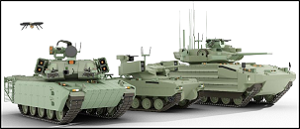 coordination with other organizations like the Army Staff, Army Futures Command, FORSCOM, the Joint Force, and others.
coordination with other organizations like the Army Staff, Army Futures Command, FORSCOM, the Joint Force, and others. of the Army Commands –they have a shared understanding of their roles within the larger Army effort. One team, one fight!
of the Army Commands –they have a shared understanding of their roles within the larger Army effort. One team, one fight!




 The recommendation is that the U.S. Army problem frame include non-kinetic war, kinetic war, and counter insurgency operations. The rationale is based on the
The recommendation is that the U.S. Army problem frame include non-kinetic war, kinetic war, and counter insurgency operations. The rationale is based on the  From a system thinking perspective,
From a system thinking perspective, space. Expanding the cognitive aperture to frame and name non-kinetic war would be a positive step forward towards maintaining a competitive advantage in the global security environment, as directed in the
space. Expanding the cognitive aperture to frame and name non-kinetic war would be a positive step forward towards maintaining a competitive advantage in the global security environment, as directed in the 
 as the result of endemic dialectical tensions.
as the result of endemic dialectical tensions.
 Historically, the “Great Captains of War” have routinely missed the new war. We saw this happen with the French in 1940, the U.S. Military in 2003 in Iraq, and we are seeing it happen now with non-kinetic war. The 9/11 Commission Report’s significant finding was, “The most important failure was the lack of imagination.”
Historically, the “Great Captains of War” have routinely missed the new war. We saw this happen with the French in 1940, the U.S. Military in 2003 in Iraq, and we are seeing it happen now with non-kinetic war. The 9/11 Commission Report’s significant finding was, “The most important failure was the lack of imagination.” transformed connected citizens into a new species: the global netizen.
transformed connected citizens into a new species: the global netizen. this with Elon Musk maneuvering satellites over the Ukraine, a sovereign nation state, which was engaged in war with Russia, a nuclear capable nation-state.
this with Elon Musk maneuvering satellites over the Ukraine, a sovereign nation state, which was engaged in war with Russia, a nuclear capable nation-state. adversaries is critical. Controlling what our adversaries learn, when they learn it, and how they learn it is now possible and can lead to the perception of a multi-reality environment. That is what we are witnessing today. The activity of non-kinetic war has weaponized the global learning system. The global learning system is the aggregation of a multitude of capabilities that people use every day to communicate, live, prosper, and to wage war. The principal objective of non-kinetic war is to deny the productive range of learning to a given adversary or culture, to degrade decision-making competencies.
adversaries is critical. Controlling what our adversaries learn, when they learn it, and how they learn it is now possible and can lead to the perception of a multi-reality environment. That is what we are witnessing today. The activity of non-kinetic war has weaponized the global learning system. The global learning system is the aggregation of a multitude of capabilities that people use every day to communicate, live, prosper, and to wage war. The principal objective of non-kinetic war is to deny the productive range of learning to a given adversary or culture, to degrade decision-making competencies. DoD and Joint Force learning system growth and alignment are critical to achieving success on current and future battlefields. The DoD and the Joint Force currently use a process operating system, as the foundation for learning, and to maintain and sustain a competitive advantage. Theoretically, and practically, this is unsustainable as processes are not created for complex adaptive problem situations, which is the problem typology that is most prevalent today. Processes are optimized for technical problem solving and management.
DoD and Joint Force learning system growth and alignment are critical to achieving success on current and future battlefields. The DoD and the Joint Force currently use a process operating system, as the foundation for learning, and to maintain and sustain a competitive advantage. Theoretically, and practically, this is unsustainable as processes are not created for complex adaptive problem situations, which is the problem typology that is most prevalent today. Processes are optimized for technical problem solving and management. advantage. Multiple levels of synthetic protective measures are required to cloak a growing number of virtual avatars that compromise the netizen and the service members’ location, and activities in non-kinetic battlespace, that includes CONUS activities. Various levels of synthetic body armor are required to ensure survivability of man and machine on a modern battle that includes traditional kinetic battlefields, as well as, our homes, offices, and all points in between.
advantage. Multiple levels of synthetic protective measures are required to cloak a growing number of virtual avatars that compromise the netizen and the service members’ location, and activities in non-kinetic battlespace, that includes CONUS activities. Various levels of synthetic body armor are required to ensure survivability of man and machine on a modern battle that includes traditional kinetic battlefields, as well as, our homes, offices, and all points in between. kinetic war. Decision-making at the individual level will require
kinetic war. Decision-making at the individual level will require


 The U.S. Army masterfully synthesized the Infantry, Armor, Artillery, Aviation, Intelligence, Air Defense, Engineer, and Command & Control Systems into an unmatched kinetic combined arms maneuver construct in the 20th Century. The United States needs to do the same for non-kinetic war and shape our future where we can win through the synthesis of 4th Industrial Revolution technology palette. The new non-kinetic way of war strategy will cut across existing barriers and will be significantly different than any
The U.S. Army masterfully synthesized the Infantry, Armor, Artillery, Aviation, Intelligence, Air Defense, Engineer, and Command & Control Systems into an unmatched kinetic combined arms maneuver construct in the 20th Century. The United States needs to do the same for non-kinetic war and shape our future where we can win through the synthesis of 4th Industrial Revolution technology palette. The new non-kinetic way of war strategy will cut across existing barriers and will be significantly different than any  archetypes used in the past. This task requires strategic sponsorship, adaptive leadership, innovation, and imagination to take the next step in the right direction — to win the Nation’s wars and ensure the preservation of our Republic.
archetypes used in the past. This task requires strategic sponsorship, adaptive leadership, innovation, and imagination to take the next step in the right direction — to win the Nation’s wars and ensure the preservation of our Republic. powerful military off the non-kinetic battlefield through the use of the “lawfare” practice of block and diversion, which presents conflict with U.S. laws, authorities, and military regulations. The risk of not acting on this recommendation is the loss of our freedom as ascribed in the United States Constitution.
powerful military off the non-kinetic battlefield through the use of the “lawfare” practice of block and diversion, which presents conflict with U.S. laws, authorities, and military regulations. The risk of not acting on this recommendation is the loss of our freedom as ascribed in the United States Constitution. About the Author: COL Stefan Banach (USA-Ret.) served with distinction in the U.S. Army from 1983 to 2010. He is a Distinguished Member of the 75th Ranger Regiment and served in that special operations organization for nine years, culminating with command of the 3rd Ranger Battalion from 2001-2003. He led U.S. Army Rangers during a historic night combat parachute assault into Afghanistan on October 19, 2001, as the “spearhead” for the Global War on Terror. Steve subsequently led U.S. Army Rangers in a second combat parachute assault into Al Anbar Province in western Iraq in 2003. He also served as the Director, School of Advanced Military Studies (SAMS); Director, Army Management Staff College; and is now the TRADOC G2 Non-Kinetic War Design Officer. He also earned a certificate in Leadership in Crisis: Preparation and Performance, from the JFK School of Government at Harvard University.
About the Author: COL Stefan Banach (USA-Ret.) served with distinction in the U.S. Army from 1983 to 2010. He is a Distinguished Member of the 75th Ranger Regiment and served in that special operations organization for nine years, culminating with command of the 3rd Ranger Battalion from 2001-2003. He led U.S. Army Rangers during a historic night combat parachute assault into Afghanistan on October 19, 2001, as the “spearhead” for the Global War on Terror. Steve subsequently led U.S. Army Rangers in a second combat parachute assault into Al Anbar Province in western Iraq in 2003. He also served as the Director, School of Advanced Military Studies (SAMS); Director, Army Management Staff College; and is now the TRADOC G2 Non-Kinetic War Design Officer. He also earned a certificate in Leadership in Crisis: Preparation and Performance, from the JFK School of Government at Harvard University. 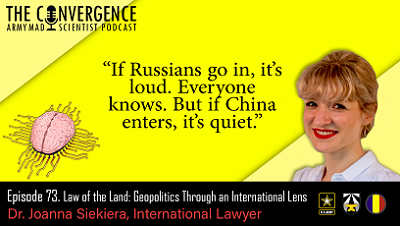
 Joanna Siekiera is an international lawyer and Doctor of Social Sciences in public policy sciences. She studied under a New Zealand Government scholarship at the Victoria University in Wellington. Her specialization is legal and political relations in the South Pacific, and the law of armed conflict. She is prodigious author, having written a book, co-authored three monographs, over 90 scientific publications in several languages, and over 40 legal analyses.
Joanna Siekiera is an international lawyer and Doctor of Social Sciences in public policy sciences. She studied under a New Zealand Government scholarship at the Victoria University in Wellington. Her specialization is legal and political relations in the South Pacific, and the law of armed conflict. She is prodigious author, having written a book, co-authored three monographs, over 90 scientific publications in several languages, and over 40 legal analyses. There are no ethics in international law – one country’s system of values may not translate to another, creating differences in approaches to the law of armed conflict.
There are no ethics in international law – one country’s system of values may not translate to another, creating differences in approaches to the law of armed conflict. 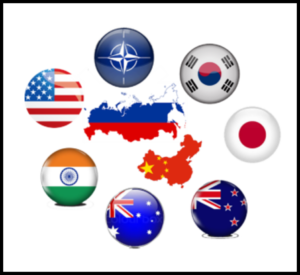 s “East” and “West” not to divide but to make people aware that the two are not the same. Assuming that an adversary shares your cultural values is a dangerous and misleading bias —
s “East” and “West” not to divide but to make people aware that the two are not the same. Assuming that an adversary shares your cultural values is a dangerous and misleading bias — 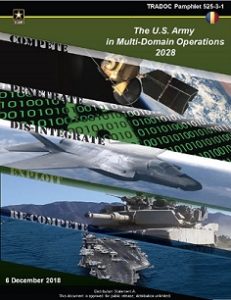 The legal aspects of
The legal aspects of  China – the biggest threat not only to western civilization but to NATO – slowly
China – the biggest threat not only to western civilization but to NATO – slowly 
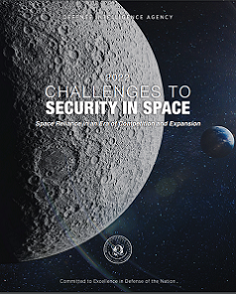 and advanced robotics. But what if we are denied our long-standing dominance in the Space Domain, losing our heretofore omnipresent Global Positioning System (GPS) capability? Per the Defense Intelligence Agency‘s
and advanced robotics. But what if we are denied our long-standing dominance in the Space Domain, losing our heretofore omnipresent Global Positioning System (GPS) capability? Per the Defense Intelligence Agency‘s  modernization efforts and our shift in focus from counterinsurgency operations to
modernization efforts and our shift in focus from counterinsurgency operations to 
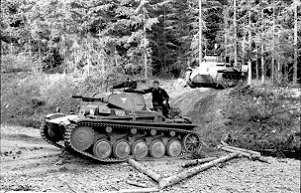
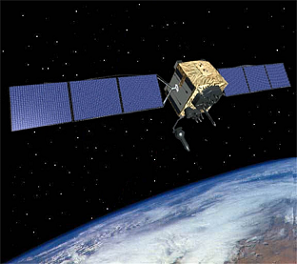


 command and control, specifically with targeting, precision munitions, BLOS communications, intelligence collection, imagery, and the
command and control, specifically with targeting, precision munitions, BLOS communications, intelligence collection, imagery, and the 